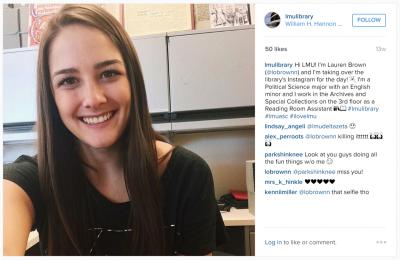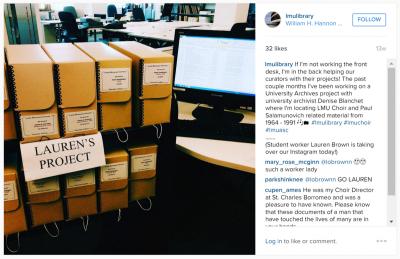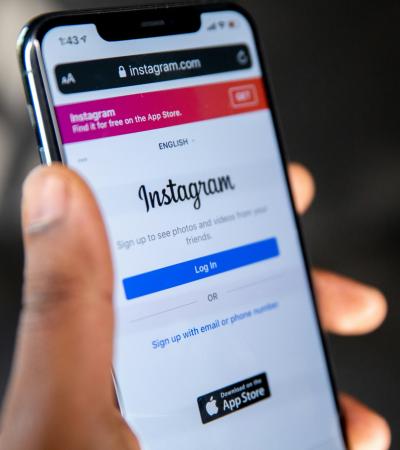Since I began managing Instagram accounts for academic libraries three years ago, I've discovered there are two types of posts that attract the most engagement from students: idyllic photos of the library and pictures of other students. We are privileged in that our building's unique architecture and proximity to a near-ocean bluff provides endless opportunities for the former. So, to leverage the successful nature of the latter, this year the William H. Hannon Library at Loyola Marymount University invited our student employees to "take over" the library's Instagram account for a day and use the platform to tell our followers about their work and what they find useful about the library.

Too often, the emotional and physical work that supports the operations of the library goes unnoticed. We wanted to increase the visibility of our library staff, specifically our student workers, in order to highlight this work. In doing so, we asked students to be a part of the library's message: that we are an institution made of people, including students, primarily supporting the needs of students. We also hoped that by including students in our outreach efforts, we could establish connections between our network of followers and the personal networks of our student workers. The following is a brief overview of our process.
Step 1: Create a Project Proposal
While not every social media campaign needs a project proposal, I have found that it is helpful to have one when I am relying on the time and work of colleagues to make it happen. For this campaign, I created a one-page project proposal that included the following: (1) the purpose of the campaign; (2) its connection to the library's strategic plan; (3) a description of the selection process; (4) a description of the students' role; (5) and a description of the follow-up process. This proposal was shared with all library staff, with student supervisors and the student participants.
Step 2: Solicit Nominations and Create a Schedule
In fall 2015, I solicited nominations from each of the student supervisors as well as the library's Communication and Outreach Working Group. Originally, I planned to send out a call for nominations each month, but the initial response from students and their supervisors was so overwhelming that I had the spring schedule in place after the first call for submissions. I received just enough submissions to schedule one student for each week of the semester, with representation from each department in the library.
Step 3: Meet with Students and Supervisors
After looking at the campus calendar and avoiding any major holidays, I created a schedule and shared it with the students' supervisors. At the beginning of each week when a student employee was scheduled to take over our Instagram account, I contacted the student's supervisor to set up a time to meet with them and the student. I outlined the process to make sure both the student and their supervisor were comfortable with the workflow and then scheduled when the student would take over Instagram that week.
Step 4: Create and Post Content
We asked each student to take a minimum of three photos and write three accompanying descriptions:
- Selfie pic: Take a selfie and tell us your name, major, your job at the library and your Instagram account (if you have one) so we can properly credit you. If you prefer not to have your likeness in the photo, that's perfectly OK. Be creative!
- Work pic: Take a picture of what you do and give us a brief description. Hashtags and emojis are encouraged.
- #Protip pic: Take a photo of your library “protip” for other students. What service/space/staff person should other students know about?
We asked the students to text this information to my personal cell phone so that I could post it to the library's feed on the appropriate day. While it would have been more authentic to give the student a temporary mobile device to use, this method allowed me to review the photos, add additional hashtags and location information, and spread the posts over the course of the day (rather than being limited to the student's work schedule).
Results and Reflection




